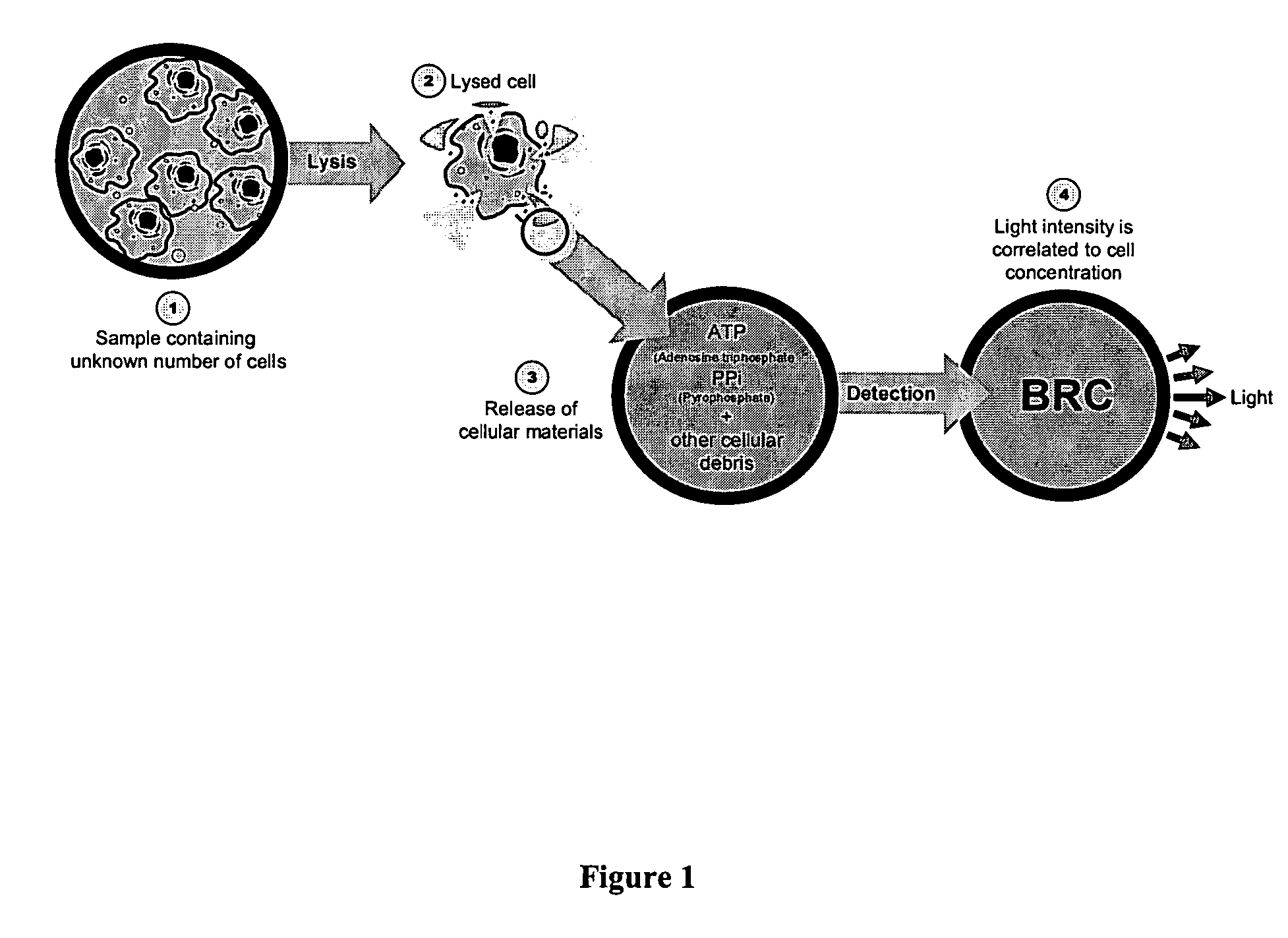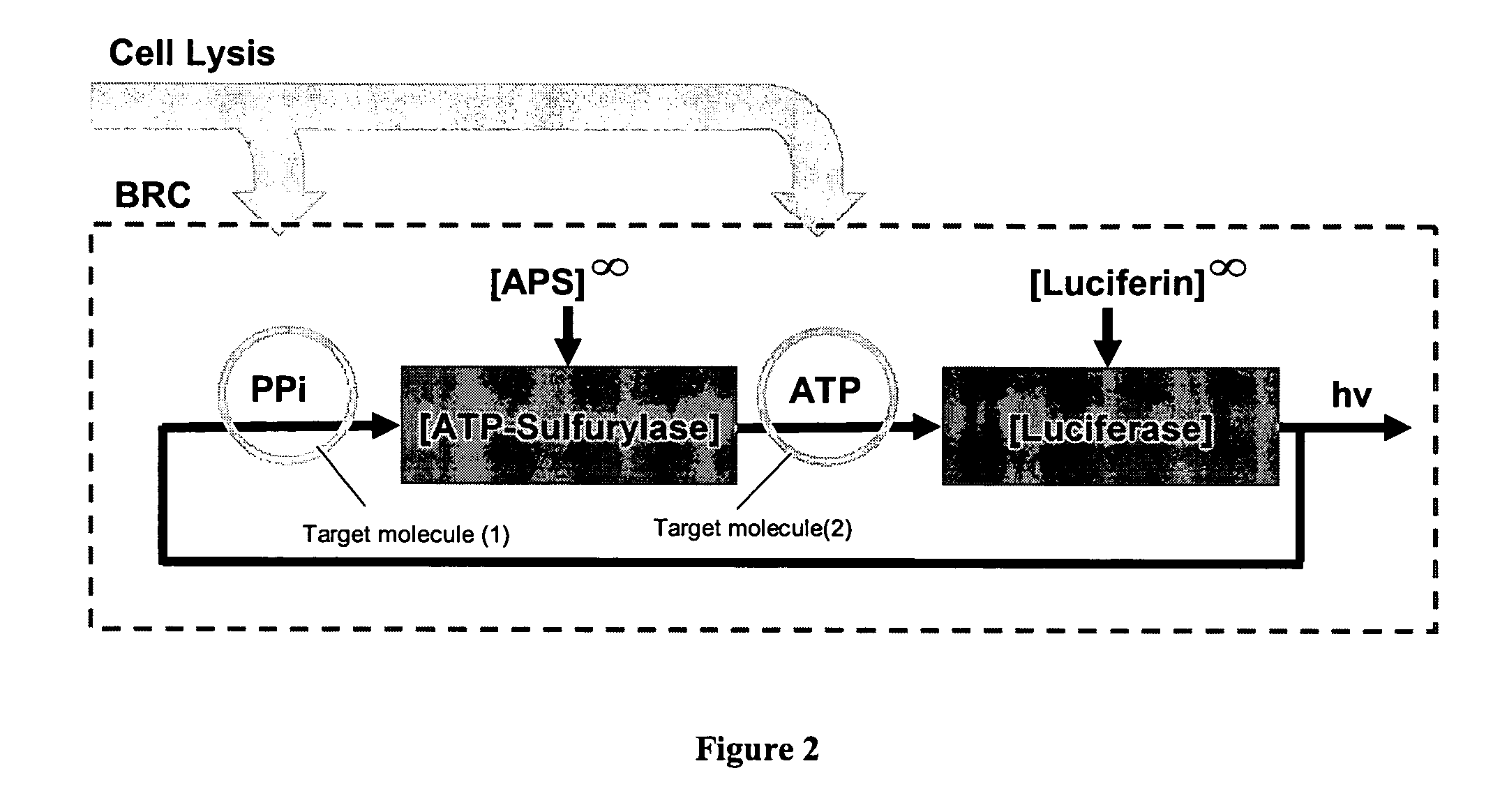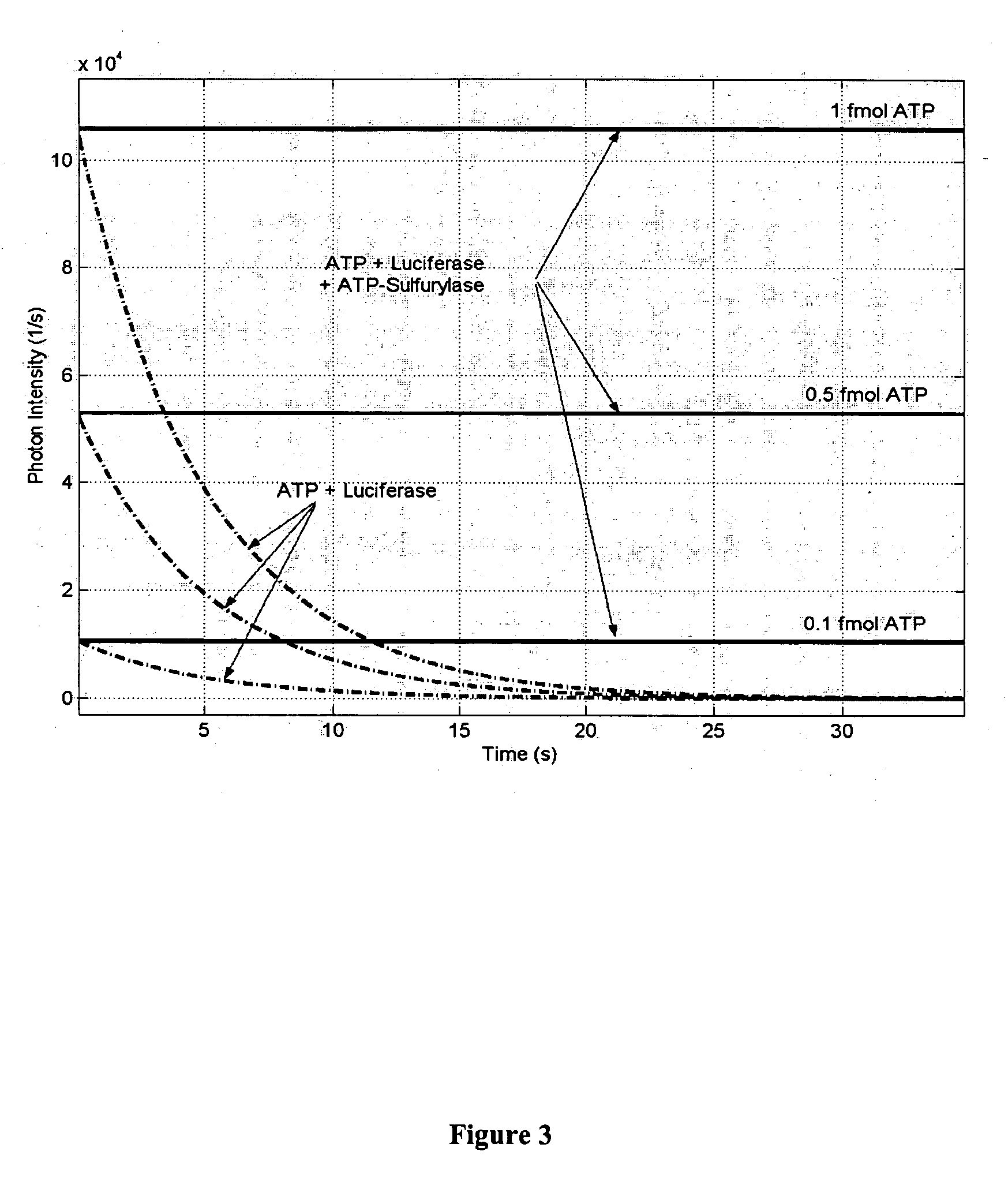Methods for cellular or microorganism capture and quantification using bioluminescence regenerative cycle (BRC) assays
a bioluminescence regenerative cycle and assay technology, applied in the field of cell and/or microorganism detection, identification and/or quantification, can solve the problems of inability to detect trace amounts of microorganisms or cells in a sample, difficulty in quantification, and low detection sensitivity, so as to improve detection sensitivity, enhance detection sensitivity, and prolong detection integration time
- Summary
- Abstract
- Description
- Claims
- Application Information
AI Technical Summary
Benefits of technology
Problems solved by technology
Method used
Image
Examples
example 1
Detection of Cells and / or Microorganisms by BRC
[0045] Assay Conditions
[0046] In an exemplary embodiment of the invention, the BRC assay may be performed in 50 μl of reaction mixture (see Ronaghi et al., Anal. Biochem. 242:84-89, 1996 with modifications) containing 250 ng luciferase (Promega, Madison, Wis.), 50 mU ATP sulfurylase (Sigma Chemical Co., St. Louis, Mo.), 2 mM dithiothreitol, 100 mM Tris-Acetate pH 7.75, 0.5 mM EDTA, 0.5 mg BSA, 0.2 mg polyvinylpyrrolidone (Mr 360.000), 10 μg D-luciferin (Biothema, Dalaro, Sweden), 5 mM magnesium acetate and 10 attomole to 0.01 attomole purified pyrophosphate or ATP. The addition of very low amounts of pyrophosphate or ATP (or analogs) may act to decrease background light emission from the reaction mixture. The generated light intensity over a time interval may be used to calculate the number of target cells and / or microorganisms in the sample.
[0047] Apparatus
[0048] Another exemplary embodiment of the invention, illustrated in FIG. 6 ...
PUM
| Property | Measurement | Unit |
|---|---|---|
| wavelength | aaaaa | aaaaa |
| bioluminescence regenerative cycle | aaaaa | aaaaa |
| affinity | aaaaa | aaaaa |
Abstract
Description
Claims
Application Information
 Login to View More
Login to View More - R&D
- Intellectual Property
- Life Sciences
- Materials
- Tech Scout
- Unparalleled Data Quality
- Higher Quality Content
- 60% Fewer Hallucinations
Browse by: Latest US Patents, China's latest patents, Technical Efficacy Thesaurus, Application Domain, Technology Topic, Popular Technical Reports.
© 2025 PatSnap. All rights reserved.Legal|Privacy policy|Modern Slavery Act Transparency Statement|Sitemap|About US| Contact US: help@patsnap.com



